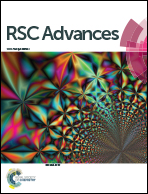Treatment of metal wastewater in pilot-scale packed bed systems: efficiency of single- vs. mixed-mushrooms
Abstract
This study investigated the biosorption of heavy metals from industrial wastewater using mushrooms at small-sized pilot-scale. Mushrooms (Agaricus bisporus and Pleurotus cornucopiae) were modified with sodium hydroxide prior to packed bed experiments. Packed bed experiments were carried out in a two-stage continuous system to investigate the effects of different mushrooms, including A. bisporus, P. cornucopiae, and mixed sorbents. A. bisporus and P. cornucopiae each showed merits during each run, and resulted in good-quality effluents. Nevertheless, the system packed with the two mushrooms demonstrated the best performance with a treated volume of 156 L and a total metal uptake of 13.64 mg g−1; the removal efficiencies were over 95.1% for all metals in the outlet effluent, and the treated effluent met the regulatory discharge standards. Models were applied to fit with some experimental data. Desorption studies were carried out for three cycles. The present study showed that the two-stage continuous system packed with different biosorbents could effectively remove various heavy metals from industrial wastewater.


 Please wait while we load your content...
Please wait while we load your content...